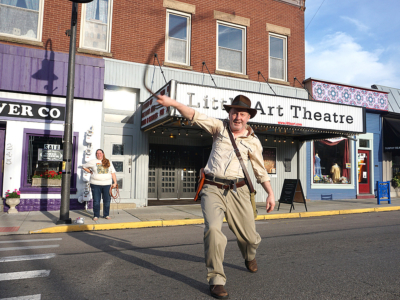Planners push zoning change
- Published: December 23, 2010
Village Planning Commission voted 5–0 at its meeting Monday, Dec. 13, to recommend that the Village follow Ohio law and immediately adopt a different set of criteria to evaluate zoning variance requests. Plan board approved the zoning code revision on the advice of Village Solicitor John Chambers, who said he had counseled the Village for several years to change the criteria but that the Village had not yet done so. The recommendation will be forwarded to Village Council for consideration at the next regular meeting on Monday, Dec. 20.
In question is a segment of the Village zoning code that requires the Village Board of Zoning Appeals, or BZA, to evaluate zoning variance requests based on whether the current code creates hardship for the applicant. The criteria, according to a 2008 ruling by the Ohio Supreme Court, are too rigid and should be replaced with criteria that require applicants to show only “practical difficulty” with the code.
The Ohio courts further provided the seven criteria that BZAs should use to weigh all the facts to make their decision. Failing to conform to just one standard should not be sufficient to deny a variance, Chamber explained. The new language gives the BZA greater discretion to weigh all of the factors involved in a variance request.
“The [current Village zoning] standards are unenforceable as a matter of law because of Ohio Supreme Court decisions,” Chambers said during the meeting. The courts emphatically ruled that traditional variances should not “be subject to the hardship clause,” but should be evaluated to determine whether the “prevailing spirit of the code was met by allowing the variance,” he said. The court recommends that BZAs use a “practical difficulty standard” rather than “hardship” to determine the need for variances.
“It’s time to get this done,” Chambers said. “The criteria are clear, and we need to move this one forward.”
The legality of the zoning code was questioned in November when the Village BZA rejected a zoning variance request to increase the number of dwelling units on a Marshall Street property from one to four units. The request was turned down because the plan did not meet the code’s minimum lot area requirement for residence B zoning, which is 6,000 square feet per dwelling unit. The proposed plan provided 4,687 square feet of area per dwelling unit. Rather than allowing the BZA to determine whether or not the overall proposal was reasonable, the guidelines in the code required the applicant to demonstrate a hardship imposed by the code in order to get the variance approved.
Current BZA Chairman Ted Donnell strongly supported the changes to the code and encouraged the Village to continue to update the rest of the zoning code to allow for the standards that were adopted in the comprehensive plan.
In other plan board business:
• Planning Commission unanimously approved a conditional use request to establish an alternative healing and teaching center at 201–203 North Walnut Street. Plan board approved the plan on the conditions that the applicants provide six off-street parking spaces, maintain daytime and early evening office hours during the week and weekends, and ensure that all other zoning conform to residential regulations.
The applicants, Douglas Klappich and Deborah McGee, proposed to turn the two-family dwelling unit on Walnut Street into a business, apartment and guest house. The parcel currently consists of two lots with a two-story home, a garage and a storage shed. Klappich and McGee propose to use the ground floor as a wellness center for yoga, massage, reiki, reflexology services and training, while the upper story would be divided into one small apartment unit and one temporary guest unit. Klappich and McGee, who currently live in Columbus, plan to move to the village and purchase the property from the current owner, Lucinda Ferguson.
Several villagers, including Jean Ballantine, Marie Hertzler and Beth Holyoke, spoke in favor of the plan, saying that a business in the area would be a welcome addition to a book bindery and another wellness practice across the street. Several others opposed the business because, as Sally Mier said, it could bring transient strangers into the family neighborhood and reduce the safety and congeniality of the area. Increasing business on Walnut Street could also exacerbate traffic and parking problems, Millard Mier said. Nearby residents Nevin Mercede and Bill Robinson opposed the business use because they preferred to see the property used for more affordable housing units, which the village needs.
The Yellow Springs News encourages respectful discussion of this article.
You must login to post a comment.
Don't have a login? Register for a free YSNews.com account.
Parkinsons.jpg)














No comments yet for this article.